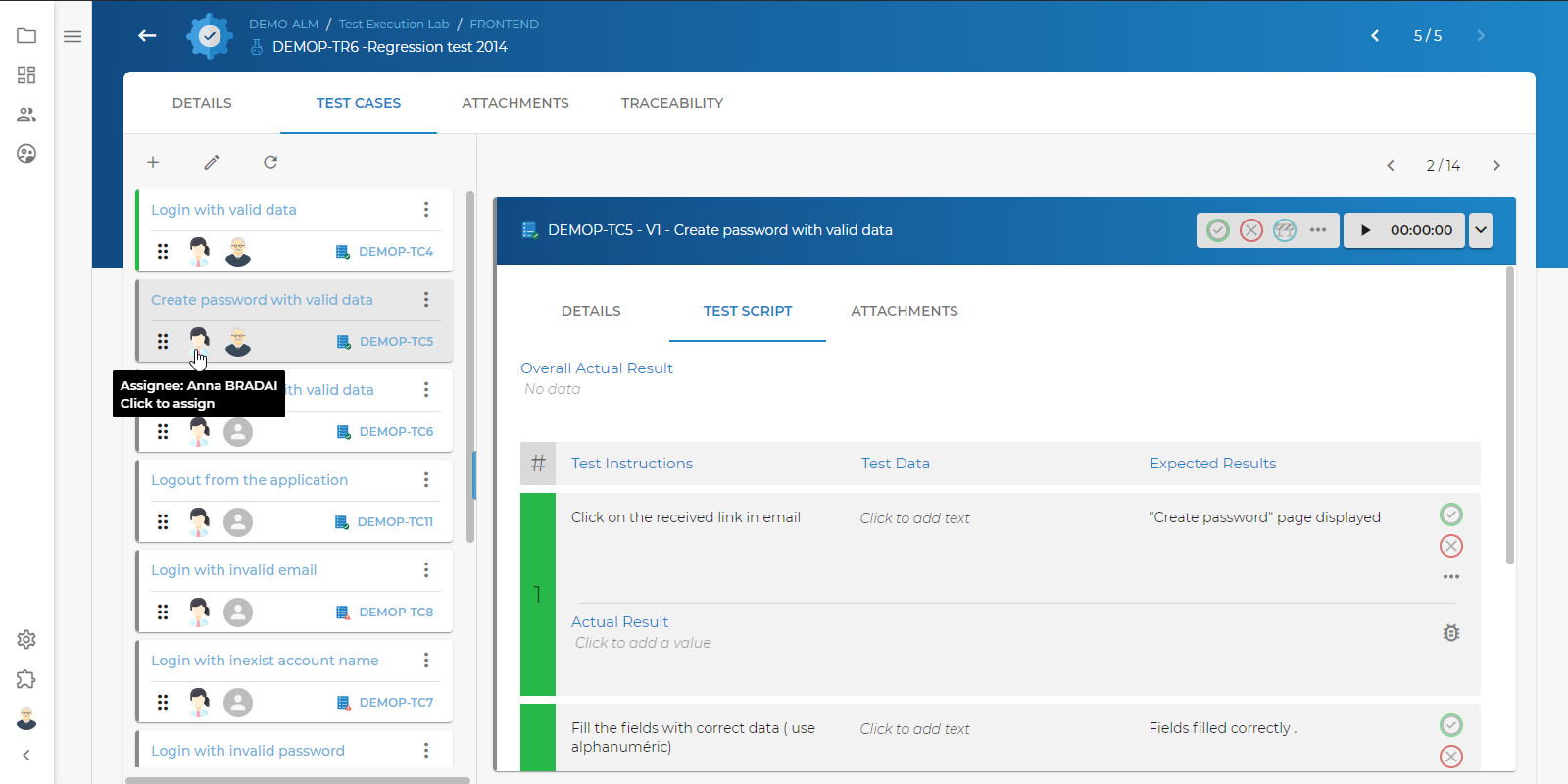Test Execution Module
Why you need the Test Execution Module ?
Monitor progress and identify risks to the test execution cycles and delivery dates
Record individual actual results for each step within a test case
Schedule and sequence your test cases execution based on start and end dates for sprints, builds, and releases by assigning to individual testers
Map existing and/or new defects to failed test cases during test run
Key Features and Benefits
- Gives the ability to group and run test cases with ease
- Quick pie-chart view of Test Execution status
- Offers full transparency to test case execution and outcome
- Ability to monitor test execution status
- Enables easy connection of defects to test cases during execution
- Ability to group different test cases into different test runs
- Multiple testers can work on executing at the same time
Smooth and Quick Test Case Execution with Complete Insights
Once grouped into test runs, test cases can be easily executed and the test execution updated. Users can view at a glance the status of each test run, including the statuses of each individual test case, either in grid or pie-chart format. Testers can add as much or as little detail as desired for each test case executed.
Test Case Information
ll of the fields in the test case can be edited during the test case execution.
Test Case Status
Each test case can be marked passed, failed, blocked, obsolete, n/a, or incomplete
Test Step Status
Each individual test step can be marked passed, failed, blocked, obsolete, n/a, or incomplete.
Defect Linking
If needed, defects can be created and/or linked to individual test cases during test execution.
Test Run Assignments
Each Test Run can have multiple users assigned to it, with the system keeping track of which user updates which test case during the test run execution.

